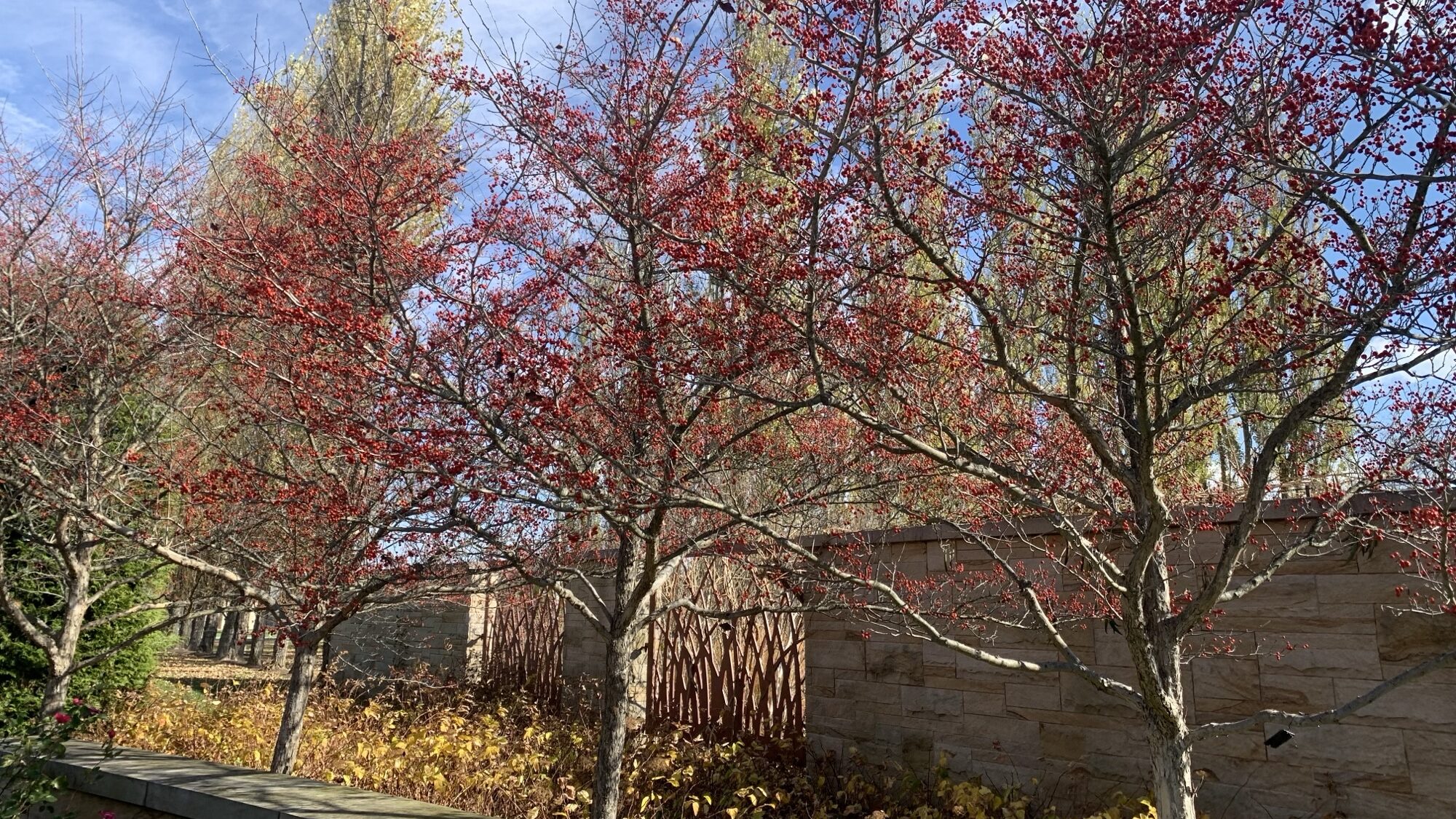An excellent, vase-shaped, mostly spineless specimen, Crataegus viridis ‘Winter King’ provides an attractive allée for our Strolling Garden during all seasons. Spring blooms are clusters of small white flowers suspended above the verdant green foliage, occurring May through June. The fall leaf color is exceptional and presents an array of oranges, reds, and purples. This North American native tree is also a larval host for the butterflies: Striped hairstreak, Banded hairstreak, Soapberry hairstreak, King’s hairstreak, and Gray hairstreak.
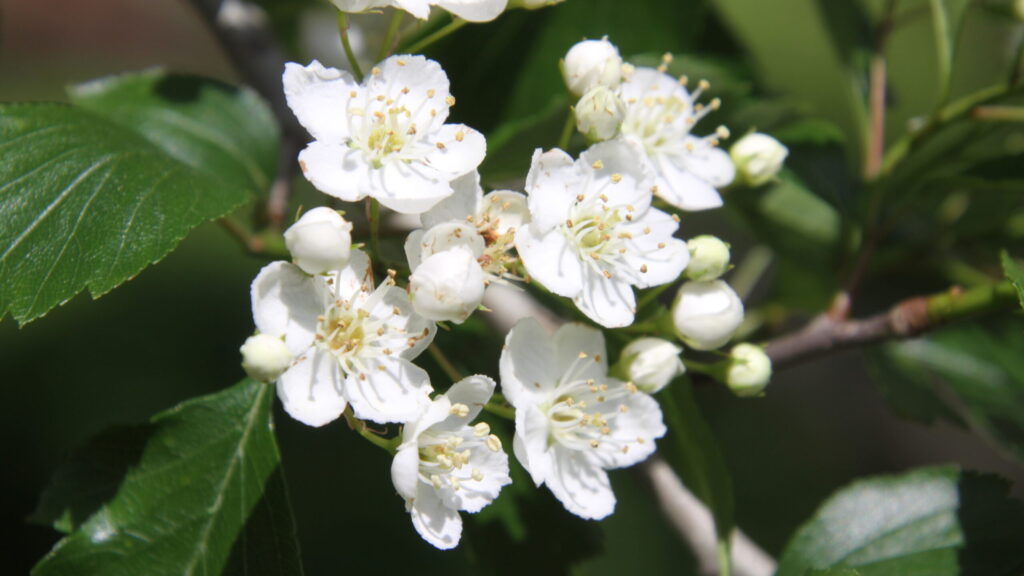
‘Winter King’ is known for producing larger drupes than the species and many other cultivars. These fruits persist well into winter and provide sustenance for many of the birds that frequent the Arboretum. The dark grey bark exfoliates with maturity, exposing streaks of orange underneath and providing another layer of character to the garden.
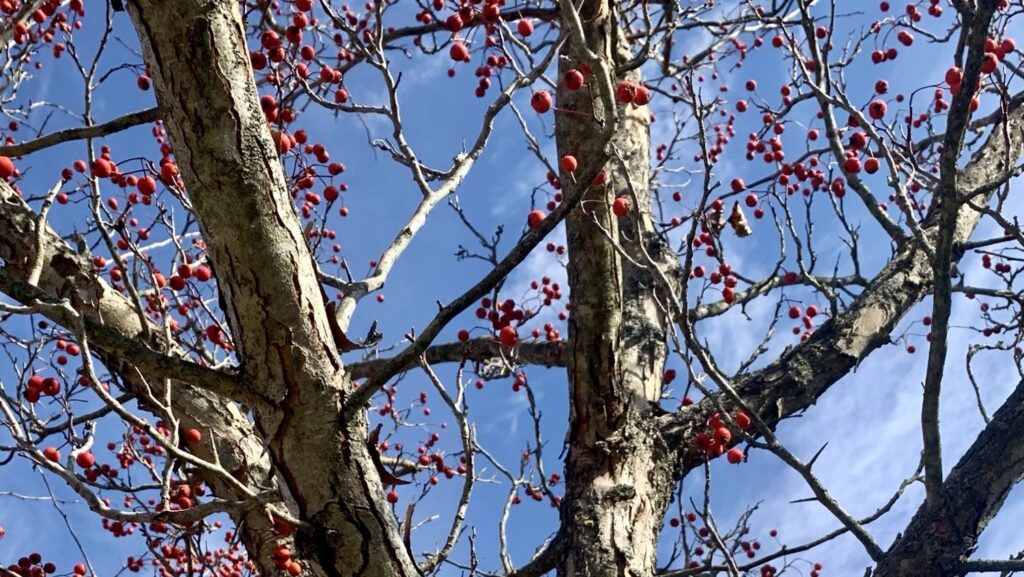
This hawthorn species is adaptable to a variety of different growing sites, including less ideal conditions like soil with poor drainage and areas of high pest and disease pressures. Because of this and its tolerance of air pollution, ‘Winter King’ is popular as an urban street tree. It performs best when planted in full sun, producing the most flowers, which lead to more fruit set later. C. viridis is largely spineless. This small tree’s maximum average height of 20–30 feet is another quality making it suitable as a street tree or in a smaller garden.
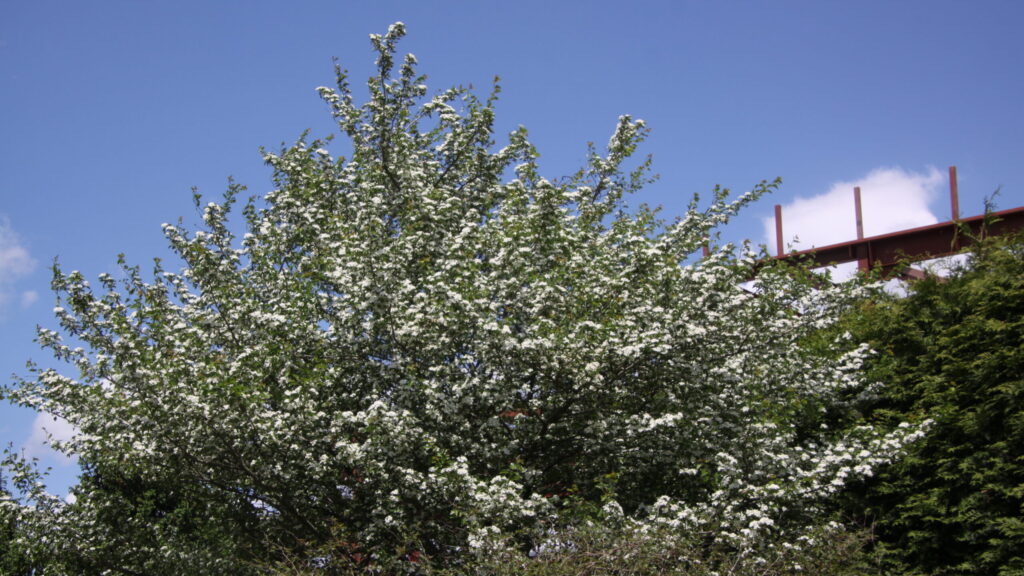
Though they may look pome-like, the seeds of the fruit are enclosed by a hard fruit covering, defining it as a drupe. Currently, ‘Winter King’ is proudly exhibiting its showy fruit set of small crimson drupes. Compare the size of the fruit with the other hawthorn species planted throughout the garden. Can you detect the size difference?
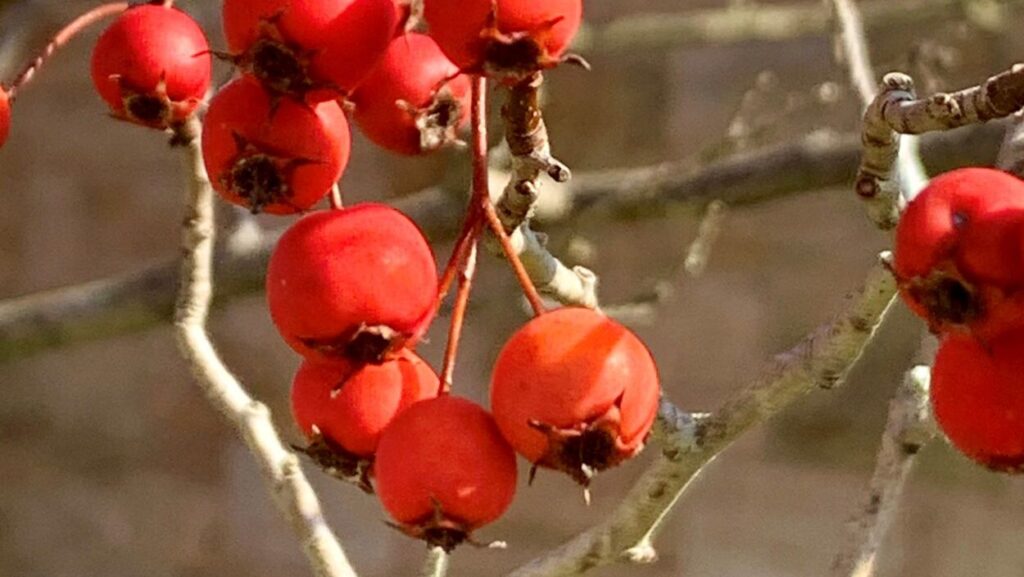
Other Hawthorn Species at the Arboretum
Cockspur hawthorn (Crataegus crus-galli)
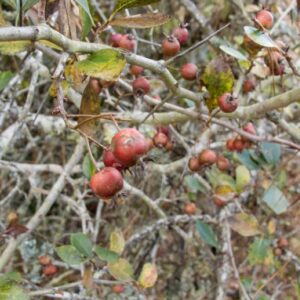 The last few orange and red autumn leaves and bright red fruit have all but fallen to expose the small and horizontal branching habit of the cockspur hawthorn specimens in our Pollinator and Bird Garden. One of three hawthorn species at the Arboretum, its long thorns, (1.5–3” long) are on display — a feature to be cautious about, though they serve a valued purpose. This species serves as a good nesting habitat for small mammals and birds, with the thorns providing protection from predators, although there are also thornless varieties available.
The last few orange and red autumn leaves and bright red fruit have all but fallen to expose the small and horizontal branching habit of the cockspur hawthorn specimens in our Pollinator and Bird Garden. One of three hawthorn species at the Arboretum, its long thorns, (1.5–3” long) are on display — a feature to be cautious about, though they serve a valued purpose. This species serves as a good nesting habitat for small mammals and birds, with the thorns providing protection from predators, although there are also thornless varieties available.
In the spring, its white flowers provide an important nectar source for many native insects. You may also find an attraction to the nectar, initially. However soon after blooming, the flower’s fragrance becomes malodorous. A distinct fishy odor is emitted to attract midges, a primary pollinator for this species.
Though tolerant of light shade and a wide range of soil types, it differs from Crataegus viridis in that it does not do well in poorly drained sites. Cockspur hawthorn has a slow to medium growth rate and an attractive horizontal habit. Left to grow without intervention, it will eventually mature into a spreading, thicket-forming broad habit. Many find this species ideal for a naturalized area or for screening. Its habit and shiny leaves make it distinct from other species within the genus.
This native hawthorn is not disease tolerant and is susceptible to cedar-hawthorn and cedar-quince rusts. If you are interested in growing this one, be mindful of planting near cedars. Cockspur hawthorn has many qualities beneficial to the ecology of middle PA, while also providing all-season interest!
Washington hawthorn (Crataegus phaenopyrum)
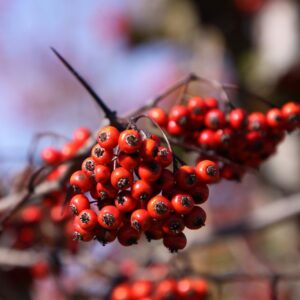 Another excellent hawthorn to check out at the Arboretum during this late fall season is Crataegus phaenopyrum. Five specimens of the Washington hawthorn are planted around the fruit orchard and near the pond boardwalk in the Pollinator and Bird Garden. Their glossy red fruits sparkle in the sun, creating a cheerful effect to the landscape. Commercially marketed as a tree specimen or shrub, this Crataegus species also performs well as a screen planting.
Another excellent hawthorn to check out at the Arboretum during this late fall season is Crataegus phaenopyrum. Five specimens of the Washington hawthorn are planted around the fruit orchard and near the pond boardwalk in the Pollinator and Bird Garden. Their glossy red fruits sparkle in the sun, creating a cheerful effect to the landscape. Commercially marketed as a tree specimen or shrub, this Crataegus species also performs well as a screen planting.
Like its cousins, the Washington hawthorn can reach a maximum of 30 feet tall. Exhibiting a rounded crown of upright branches emanating from a short trunk, this hawthorn is the last to flower in the spring. It shows off an abundance of small flowers and is one of the most floriferous of all the species. Its foliage, when new, is reddish purple and, once unfolded, turns a lustrous green. In the fall, its foliage transforms to brilliant shades of orange, scarlet, and purple, accompanied shortly after by the small red fruits. The fruit display is exceptional.
The moniker, “Washington hawthorn,” originates from Washington, D.C., from which the plant was first introduced to Pennsylvania in the early 19th century. C. phaenopyrum is native to North America from Virginia to Missouri, Arkansas, and Alabama and became a popular hedge plant in D.C. in the late 1700s.
Looking for a hawthorn to grow in your landscape? Choose this species if you have a full-sun site and have concerns about cedar-apple rust — it has great resistance. Washington hawthorn is another impressive flowering and fruiting tree selection that beckons local wildlife and pollinators!

